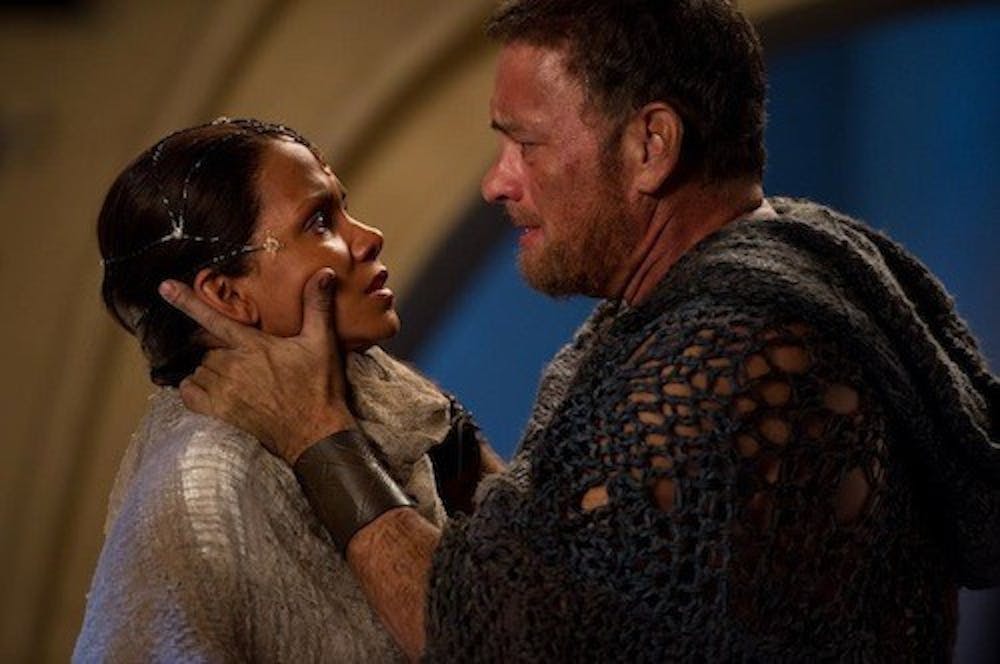Visceral is the most apt description of “Cloud Atlas,” the ambitious, if ultimately, messy new film from siblings Lana and Andy Wachowski, the famous directors of “The Matrix,” and Tom Tykwer (“Run Lola Run”). The film is an adaptation of the novel of the same name by David Mitchell, often cited as “unfilmable” because of its epic structure.
The film strings together six different storylines ranging from depictions of historical settings in the 1850s to the grim post-apocalyptic future. These different narratives are vaguely connected by the themes of freedom and the interconnectedness of human lives.
• The first story, which takes place in 1850, is set in the Pacific and depicts notary Adam Ewing (Jim Sturgess, “One Day”) and his relationship with another passenger.
• In the second story set in 1931 Berlin, a dying composer (Jim Broadbent, “The Iron Lady”) finds company in young Robert Frobisher (Ben Whishaw, “The Tempest”).
• The third story chronicles Luisa Rey (Halle Berry, “New Year’s Eve”), a reporter, and her efforts to reveal health hazards in a nuclear plant helped by a whistleblower (Tom Hanks, “Extremely Loud and Incredibly Close”).
• The fourth story again features Broadbent as a publisher who suddenly enters a nursing home under the direction of a Nurse Ratched-like character, played by Hugo Weaving (“The Matrix”) in full-on drag.
• The fifth story takes us to near-future vision of Seoul and features a rebellious service clone (Doona Bae, “As One”).
• The last story happens in the post-apocalyptic future where Hanks and Berry return to play two people who are in need of each other’s assistance.
While there is much to be appreciated in the film’s epic scope, it’s full of tonal missteps and structural inconsistencies. The vague connections between the stories seem perfect for a novel, but it doesn’t transition well into film. The script tends to be sandbagged by its attempt to connect these different stories into a coherent thread through a non-chronological structure. As a result, the story becomes a puzzle that can easily be confusing and frustrating to viewers.
Even more frustrating, perhaps, is the directors’ indulgence. The film is incredibly long and tedious, and at times the editing isn’t lively enough to keep the momentum going.
Despite its egregious flaws, the film succeeds unequivocally in being a visual treat. The Wachowskis have always been great visual storytellers, but they are at their most painterly here. This is one of the most beautifully shot and imagined films with its colorful palette rivaling the candy-like gloss of the directors’ previous film, “Speed Racer.”
All the actors do solid work even if their characters seem incomplete and rather perfunctory. Most notable is the work of Broadbent, who rises to the emotional demands of his characters. And Berry delivers a good performance, after starring in a string of films that are decidedly unworthy of her talents.
The Wachowskis definitely took a chance in realizing such a strange story, but the film is often bogged down by its very premise. Ultimately, the film is a must-see only because no letter or number grade can fully capture this film’s onscreen experience. It might not work for everyone, but it definitely is a marvelous achievement, even if it doesn’t necessarily make sense all the time.
thescene@theeagleonline.com





